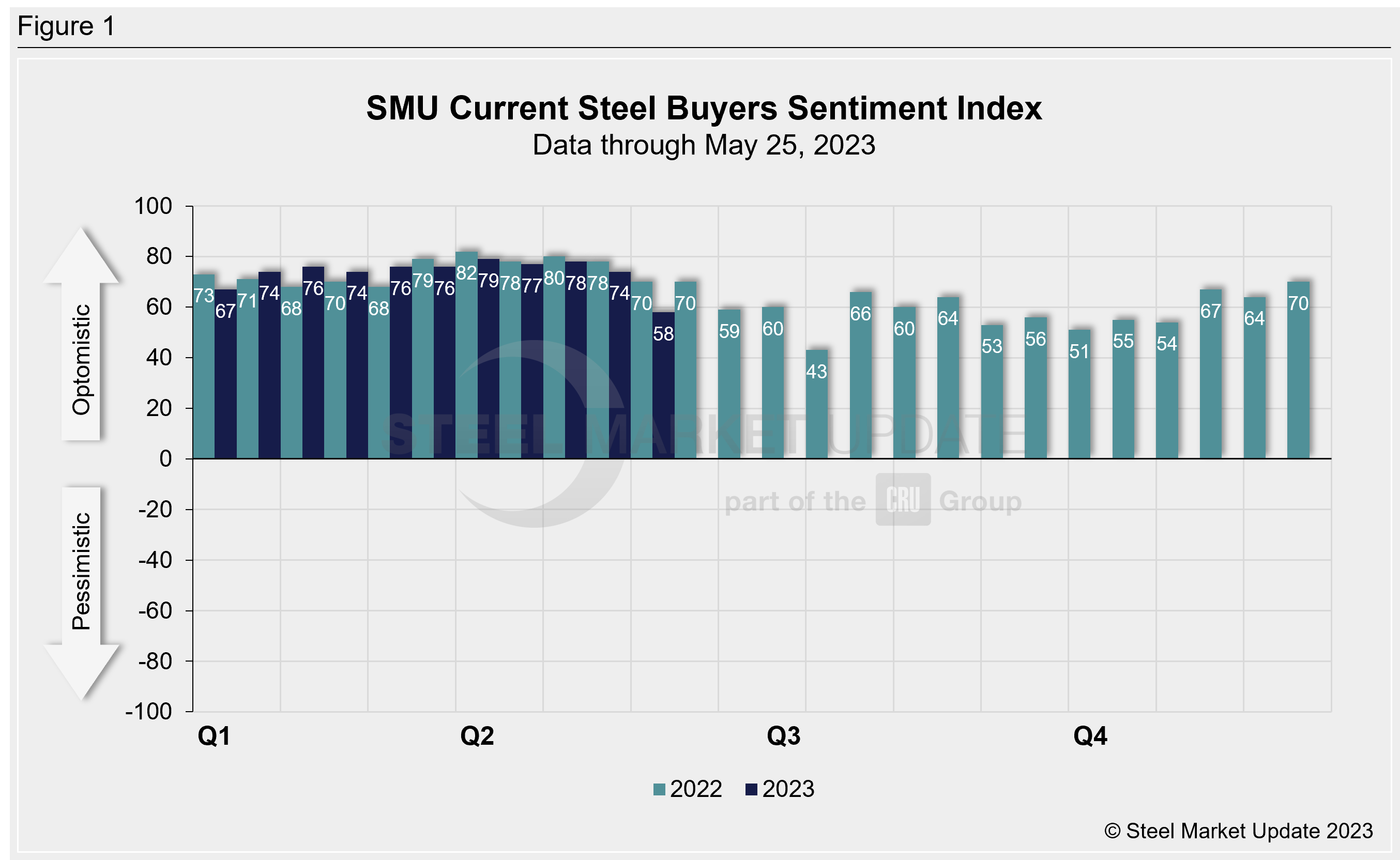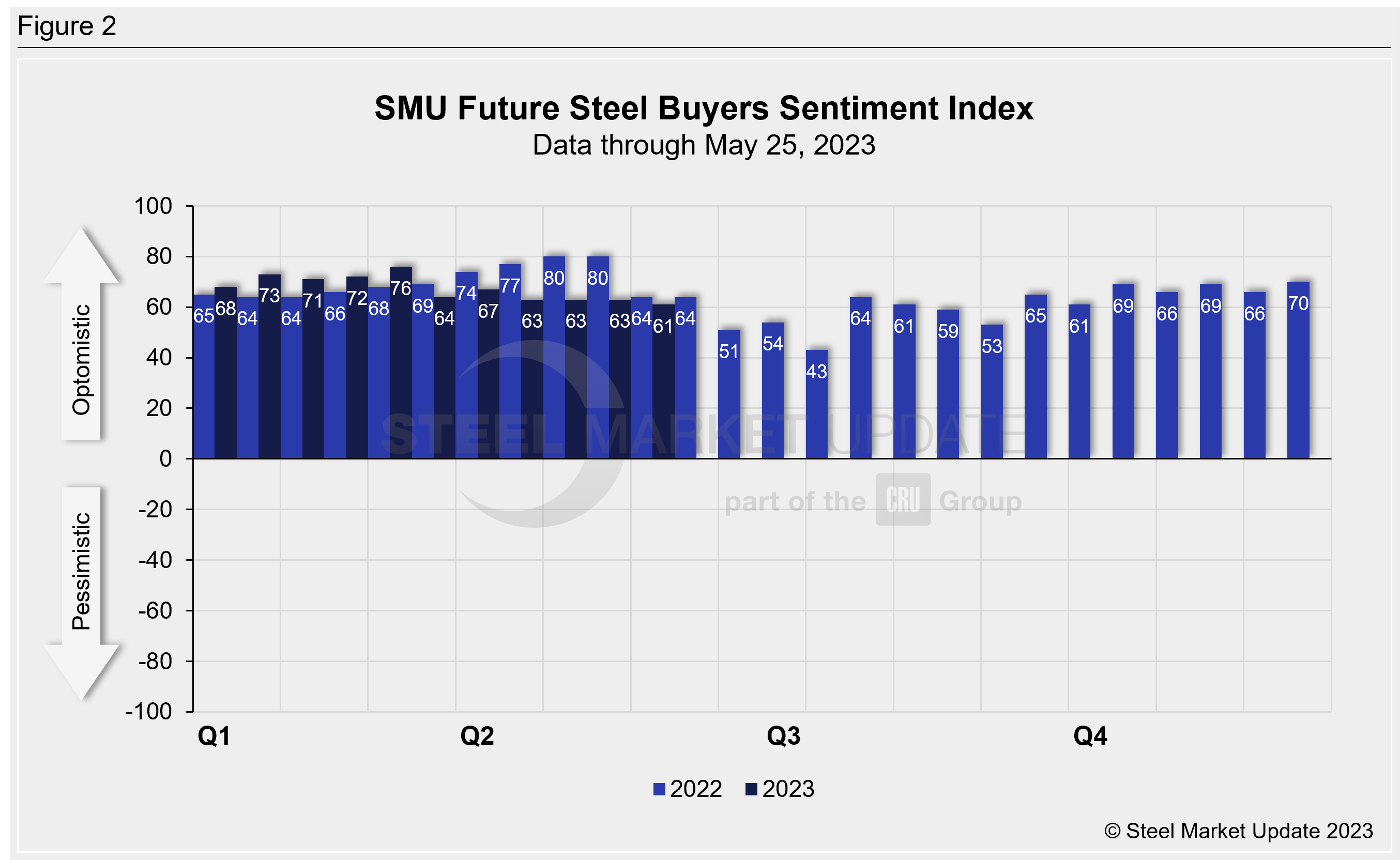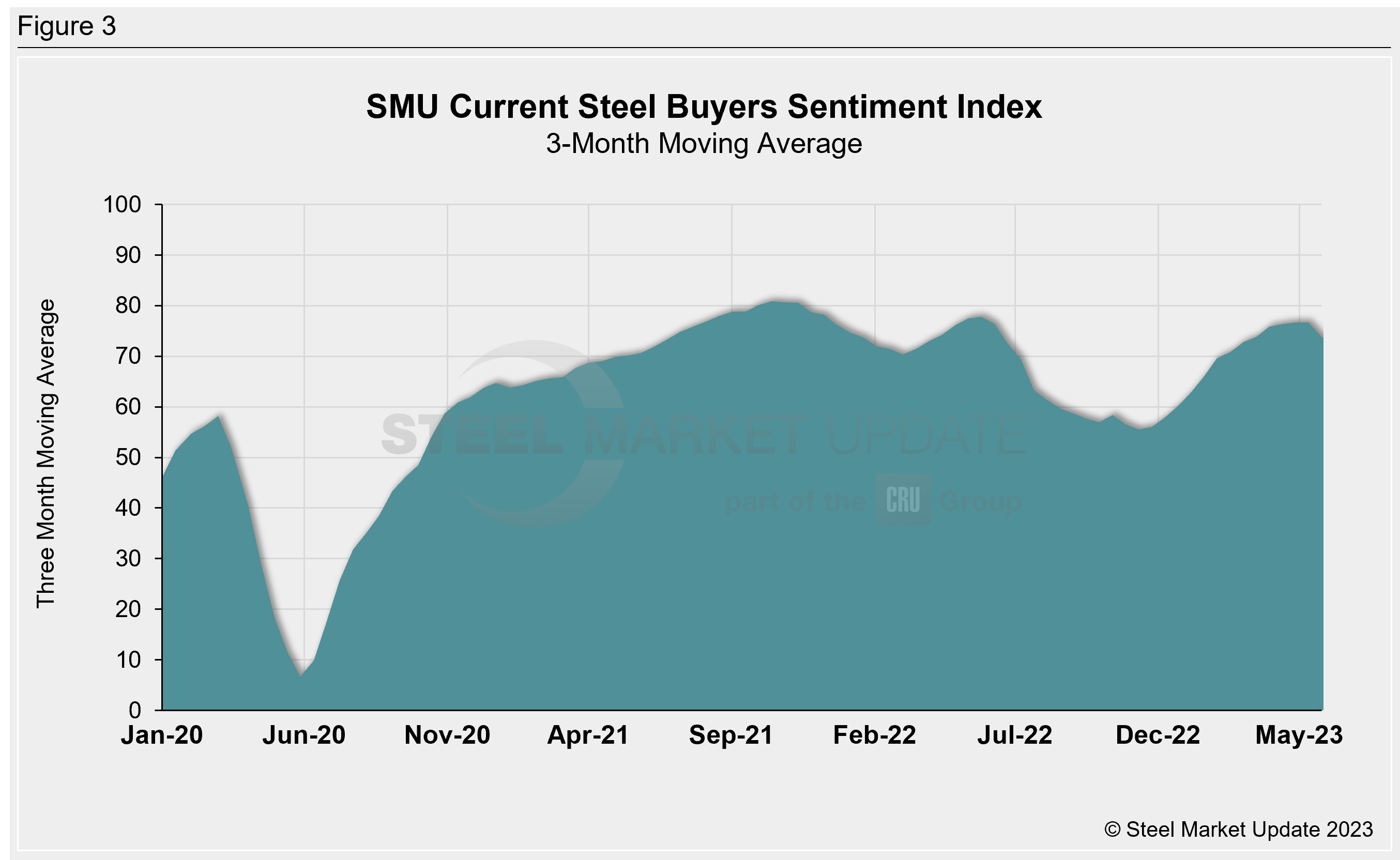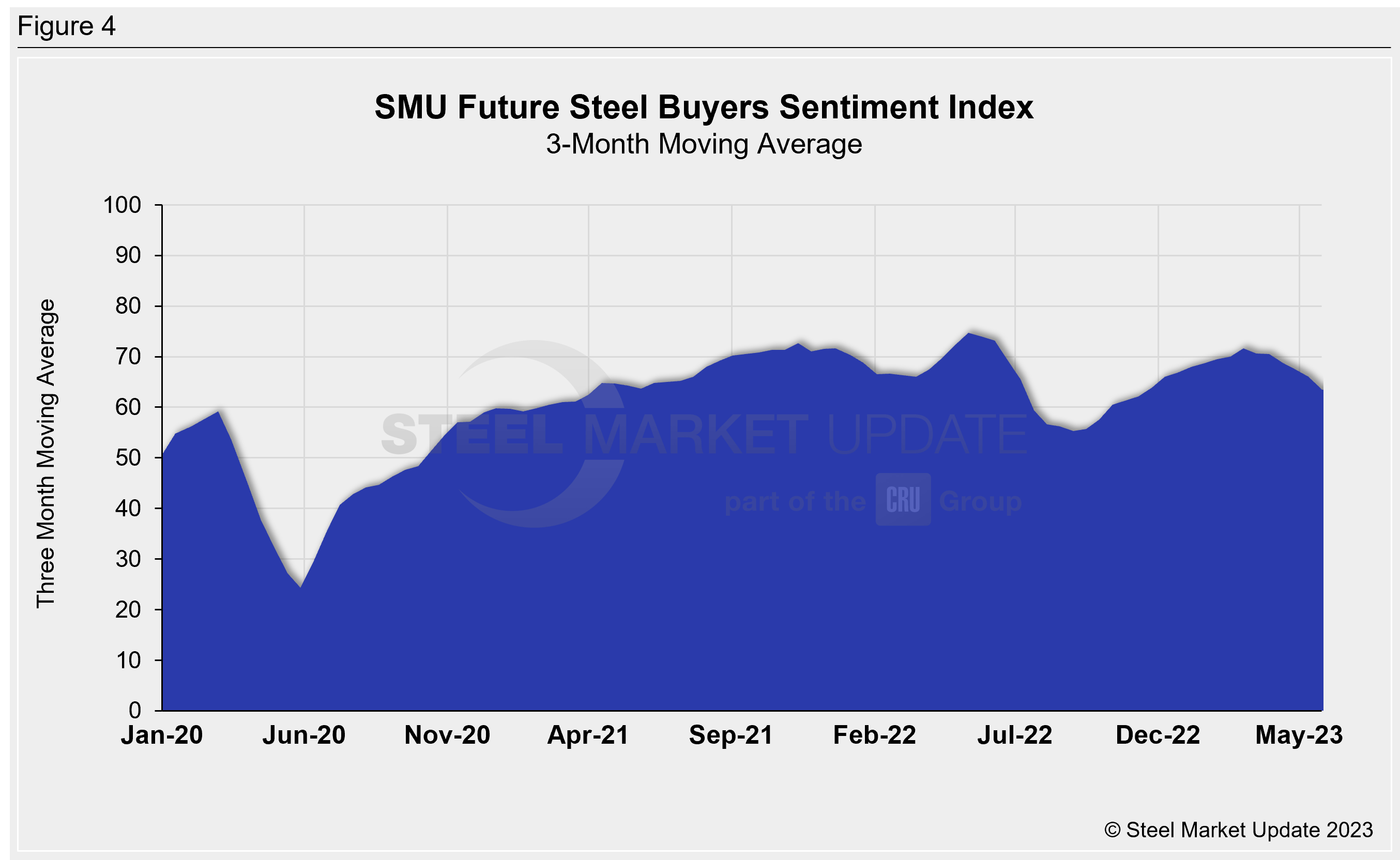Market Data

May 25, 2023
Current Steel Buyers Sentiment Drops Below Future, Both Fall
Both SMU’s Current and Future Steel Buyers Sentiment Indices fell this week compared to two weeks ago, with Current tumbling 16 points to drop below Future Sentiment, according to our most recent survey data.
The Steel Buyers Sentiment Indices measure how steel buyers feel about their company’s chances of success in the current market, as well as three-to-six months down the road. Every other week we poll steel buyers about sentiment. We have historical data dating to 2008.
SMU’s Current Buyers Sentiment Index was +58 this week, down from +74 two weeks earlier (Figure 1). This is the lowest level since November of last year. Recall that current sentiment had been hovering in the mid- to high-70s since the middle of January.

SMU’s Future Buyers Sentiment Index measures buyers’ feelings about business conditions three-to-six months in the future. This week, the index fell two points to +61. This is the first time future sentiment has been higher than current sentiment since the beginning of January.

Measured as a three-month moving average, the Current Sentiment 3MMA fell three points to +73.67 vs. the previous market check (Figure 3).

The Future Sentiment 3MMA was +63.5, down from +66.0 two weeks ago (Figure 4).

What SMU Survey Respondents Had to Say:
“Should be another pretty solid month for us.”
“The market has slowed as end-users and large OEMs hold off ordering until the prices drop lower.”
“Demand is actually OK, but buyers are making things look worse because they are managing inventory.”
“End-user demand is stable. No change.”
“Yes, (we will be successful three to six months from now), but as an OEM we like it when steel pricing is going down.”
About the SMU Steel Buyers Sentiment Index
The SMU Steel Buyers Sentiment Index measures the attitude of buyers and sellers of flat-rolled steel products in North America. It is a proprietary product developed by Steel Market Update for the North American steel industry. Tracking steel buyers’ sentiment is helpful in predicting their future behavior.
Positive readings run from +10 to +100. A positive reading means the meter on the right-hand side of our home page will fall in the green area indicating optimistic sentiment. Negative readings run from -10 to -100. They result in the meter on our homepage trending into the red, indicating pessimistic sentiment. A reading of “0” (+/- 10) indicates a neutral sentiment (or slightly optimistic or pessimistic), which is most likely an indicator of a shift occurring in the marketplace. Sentiment is measured via SMU surveys twice per month.
Click here to view an interactive graphic of the SMU Current Steel Buyers Sentiment Index and of the SMU Future Steel Buyers Sentiment Index.
By Ethan Bernard, ethan@steelmarketupdate.com






